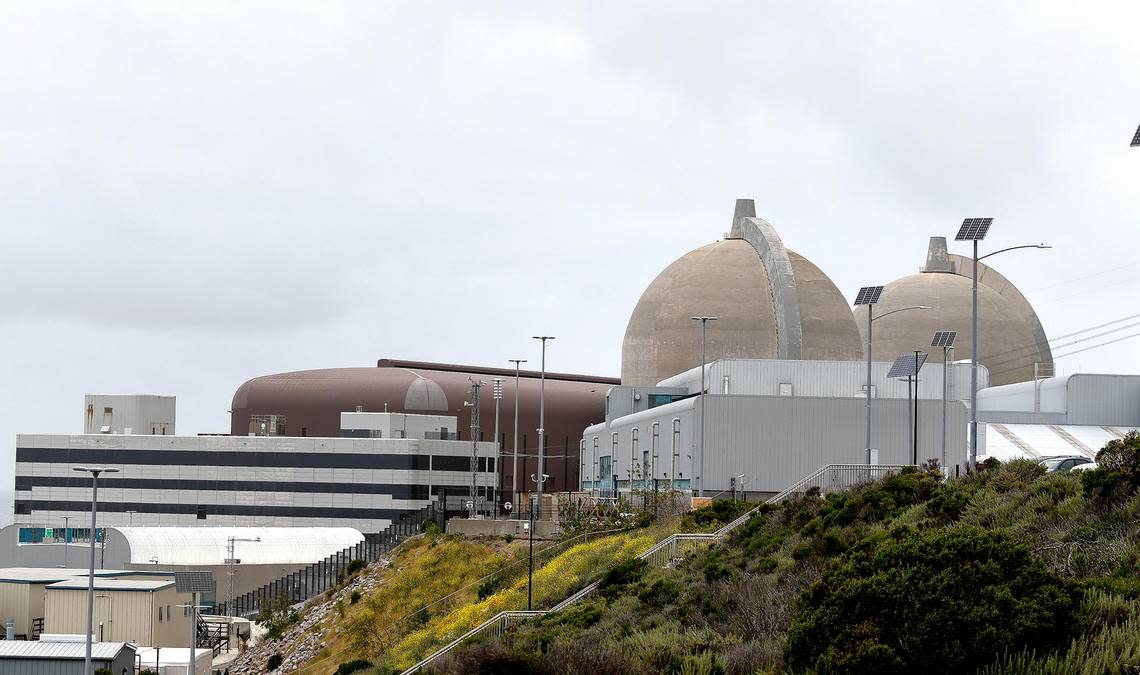California loaned PG&E $1.4B to keep Diablo Canyon open. Can the utility pay it back?

- Oops!Something went wrong.Please try again later.
California lawmakers are worried that taxpayers could be on the hook for a $300 million gap in a loan issued to Pacific Gas and Electric to keep the Diablo Canyon nuclear power plant operational until 2030.
A flurry of letters between legislative budget leaders and the state’s finance department last week illustrate a growing conflict between proponents of loaning the utility more money and those advocating for additional accountability.
Budget committee chair Scott Wiener, D-San Francisco, said more information is needed about how PG&E has spent hundreds of millions already loaned by the state. The tussle comes amid a budget deficit, which the legislative analyst warned could be as high as $73 billion.
“We believe it is poor financial judgment to provide a loan of this magnitude to an investor-owned utility without having basic loan repayment information,” Wiener wrote in a letter to the Department of Finance Wednesday.
In 2022, at the urging of Gov. Gavin Newsom, the legislature approved $1.4 billion in loans to keep the Diablo Canyon plant open to help maintain reliability of the state’s power grid. PG&E had been preparing to shutter it in 2025, in part, due to seismic safety concerns.
The measure, SB 846, authorized a $600 million transfer from the state’s general fund to keep the plant open with a plan to approve the rest later. PG&E was expected to repay the state loan with a federal grant from the Department of Energy.
But California’s finance department said the federal grant, which is not public, amounted to only $1.1 billion. Now the department is urging lawmakers to approve a final $400 million loan disbursement to the utility.
After letters back and forth, legislative leaders want more information. They warned that taxpayers could be left holding the bag for a $300 million wide gap and called for more transparency.
“We remain concerned about the terms of the loan and the use of the General Fund as a source of finances,” the leader from budget committee lawmakers went on to say, adding that the finance department’s previous responses to their questions were “limited in specificity” and insufficient.
Senate president pro tempore Mike McGuire, D-North Coast, said “While this issue is part of budget deliberations, the Senate’s position remains the same. Since state dollars were provided, PG&E needs to pay back taxpayers in full.”
Beyond the $300 million question mark, some energy watchdogs warn there’s little means to know whether PG&E is complying with the loan terms and not using it to pay shareholders.
“There’s a gap here, and the administration won’t own up to that fact,” said Matt Freedman, staff attorney at The Utility Reform Network, a San Francisco-based consumer advocacy organization.
According to the loan terms, it can only be paid back by the department of energy or any leftover profits made by the plant. But Freedman believes the utility is wrongfully using state funds to benefit shareholders.
“If most people knew that their tax dollars were going to subsidize PG&E and reduce the liability of its shareholders, they would be furious,” he added.
The deputy director of water and energy, Delphine Hou at California Department of Water Resources, which has overseen the state loan to the utility, said in an emailed statement that lawmakers and critics are jumping to early conclusions.
“It is incorrect to assume that the loan will not be paid back,” she said. “The Diablo Canyon loan agreement was structured in a way to be paid out over time, allowing DWR to verify costs and PG&E to meet regulatory deadlines.”
PG&E spokesperson Lynsey Paulo said in an emailed statement that “Not a single dollar earned in performance-based disbursements was treated as shareholder profit or paid out as dividends,” adding that DWR independently validates the funds.
In response to the $300 million gap, Paulo pointed to the text of the 2022 bill, which said the state loan could be repaid using “any excess market revenues in the final year of the extended operating period.”
The finance department said in a letter that additional state funds are needed for inspections, refueling and other critical maintenance work at the power plant, warning that without the legislature’s approval of the final disbursement, PG&E could risk eligibility for the federal grant.
“While it is possible that some of the General Fund loan may not be repaid, at this time, (the department of) finance simply cannot say for certain,” wrote the agency’s director, Joe Stephenshaw.

